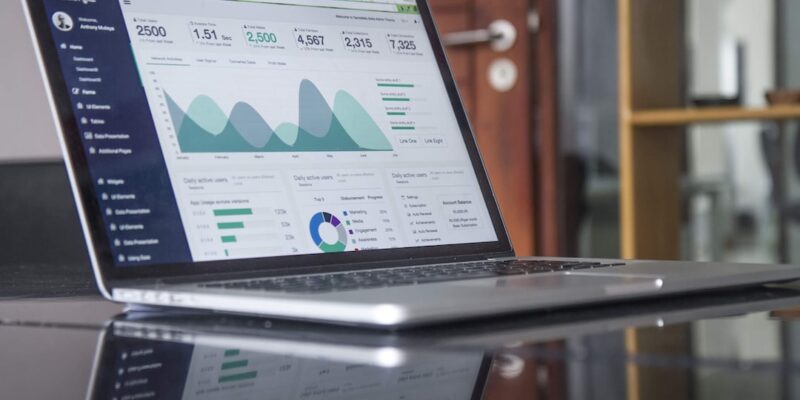
The Ultimate Guide to Banking Accounts: Everything You Need to Know
Banking accounts are financial tools that allow individuals and businesses to store and manage their money. These accounts are offered by banks and other financial institutions, and they provide a safe and convenient way to deposit, withdraw, and transfer funds. Having a banking account is essential in today’s modern world, as it allows individuals to receive their salaries, pay bills, make purchases, and save for the future.
The concept of banking accounts dates back thousands of years. In ancient times, people would deposit their valuables with trusted individuals or institutions for safekeeping. Over time, these institutions evolved into banks, which began offering various services to their customers. The first modern banking accounts were introduced in the 18th century, allowing individuals to deposit their money with banks and receive interest on their balances.
Key Takeaways
- Understanding the basics of banking accounts is crucial for managing your finances effectively.
- Choosing the right type of banking account depends on your financial goals and needs.
- Opening a banking account is a simple process that requires some personal information and documentation.
- Features and benefits of banking accounts vary, so it’s important to compare and choose the one that suits you best.
- Managing your banking account effectively involves monitoring your transactions, setting up alerts, and keeping your personal information secure.
Types of Banking Accounts: Choosing the Right One for You
There are several types of banking accounts available, each with its own features and benefits. The most common types of accounts include checking accounts, savings accounts, money market accounts, and certificate of deposit (CD) accounts.
Checking accounts are designed for everyday transactions. They allow individuals to deposit money, write checks, and make electronic payments. These accounts often come with a debit card for easy access to funds.
Savings accounts are intended for long-term saving. They typically offer higher interest rates than checking accounts and may have restrictions on the number of withdrawals allowed per month. Savings accounts are a great option for individuals looking to build an emergency fund or save for a specific goal.
Money market accounts are similar to savings accounts but offer higher interest rates in exchange for higher minimum balance requirements. These accounts often come with limited check-writing capabilities and may require a higher initial deposit.
Certificate of deposit (CD) accounts are time deposits that offer fixed interest rates for a specified period of time. These accounts typically have higher interest rates than regular savings accounts but require individuals to leave their money untouched for the duration of the CD term.
When choosing a banking account, it’s important to consider your financial goals and needs. If you need easy access to your funds for everyday expenses, a checking account may be the best option. If you’re looking to save for the long term, a savings account or CD account may be more suitable.
Opening a Banking Account: Step-by-Step Guide
Opening a banking account is a relatively straightforward process. Here is a step-by-step guide to help you get started:
1. Researching and choosing a bank: Start by researching different banks and comparing their offerings. Consider factors such as fees, interest rates, customer service, and convenience.
2. Preparing necessary documents: Before opening an account, you will need to gather certain documents. These typically include proof of identity (such as a driver’s license or passport) and proof of address (such as a utility bill or lease agreement).
3. Filling out application forms: Once you have chosen a bank and gathered the necessary documents, you will need to fill out an application form. This can usually be done online or in person at a branch location.
4. Funding the account: After submitting your application, you will need to fund your new account. This can be done by depositing cash, writing a check, or transferring funds from another account.
5. Setting up online and mobile banking: Many banks offer online and mobile banking services, which allow you to manage your account from anywhere at any time. Take advantage of these services by setting up online and mobile banking during the account opening process.
Features and Benefits of Banking Accounts: What to Look for
| Features and Benefits | Description |
|---|---|
| Low or No Fees | Some banks offer accounts with no monthly maintenance fees or ATM fees, which can save you money in the long run. |
| Interest Rates | Some accounts offer higher interest rates than others, which can help your money grow faster. |
| Overdraft Protection | Some banks offer overdraft protection, which can prevent you from being charged fees for overdrawing your account. |
| Mobile Banking | Many banks offer mobile banking apps, which allow you to check your account balance, transfer money, and pay bills from your phone. |
| Online Banking | Most banks offer online banking, which allows you to manage your account from your computer or tablet. |
| Rewards Programs | Some banks offer rewards programs, which can earn you cash back, points, or other perks for using your account. |
| Customer Service | Good customer service is important when choosing a bank, as you want to be able to get help quickly and easily if you have any issues. |
When choosing a banking account, it’s important to consider the features and benefits offered by different banks. Here are some key factors to look for:
1. Interest rates: Interest rates determine how much money you can earn on your deposits. Look for accounts that offer competitive interest rates to maximize your savings.
2. Minimum balance requirements: Some accounts require a minimum balance to be maintained in order to avoid fees or earn interest. Make sure to choose an account with a minimum balance requirement that aligns with your financial situation.
3. ATM access: Consider the availability of ATMs and whether your bank charges fees for using out-of-network ATMs. Having easy access to ATMs can be convenient for cash withdrawals and deposits.
4. Overdraft protection: Overdraft protection is a feature that allows you to avoid overdrawing your account and incurring fees. Look for accounts that offer this feature, especially if you tend to have low balances or frequently make large transactions.
5. Rewards programs: Some banks offer rewards programs that allow you to earn points or cash back on certain transactions. If you frequently use your debit card or make online purchases, consider choosing an account with a rewards program.
6. Customer service: Good customer service is essential when it comes to banking. Look for banks that have a reputation for excellent customer service and offer multiple channels of support, such as phone, email, and live chat.
Managing Your Banking Account: Tips and Tricks
Once you have opened a banking account, it’s important to effectively manage it to avoid fees and maximize its benefits. Here are some tips and tricks to help you manage your account:
1. Balancing your checkbook: Regularly reconcile your account by comparing your bank statement with your own records. This will help you catch any discrepancies or errors and ensure that your account is accurate.
2. Monitoring your account regularly: Check your account balance and transaction history regularly to stay on top of your finances. This will help you identify any unauthorized transactions or errors and allow you to address them promptly.
3. Setting up automatic payments and transfers: Take advantage of automatic payment and transfer options to ensure that your bills are paid on time and that you are consistently saving. This can help you avoid late fees and make saving a habit.
4. Avoiding overdrafts and fees: Be mindful of your account balance and avoid overdrawing your account. Set up alerts to notify you when your balance is low, and consider opting out of overdraft protection if you prefer to have transactions declined rather than incur fees.
5. Updating your account information: Keep your contact information up to date with your bank to ensure that you receive important notifications and can be reached in case of any issues or concerns.
Online and Mobile Banking: Convenience at Your Fingertips
Online and mobile banking have revolutionized the way we manage our finances. These services allow individuals to access their accounts, make transactions, and monitor their finances from the comfort of their own homes or on the go. Here are some benefits of online and mobile banking:
1. Convenience: Online and mobile banking allow you to access your accounts 24/7, eliminating the need to visit a branch during banking hours. You can check your balance, transfer funds, pay bills, and deposit checks at any time that is convenient for you.
2. Accessibility: With online and mobile banking, you can manage your accounts from anywhere with an internet connection. Whether you’re at home, at work, or traveling, you can stay connected to your finances.
3. Time-saving: Online and mobile banking save you time by eliminating the need to visit a branch or wait in line for a teller. You can complete transactions quickly and efficiently with just a few clicks or taps.
4. Enhanced security: Banks have implemented robust security measures to protect online and mobile banking transactions. These measures include encryption, multi-factor authentication, and fraud detection systems.
To set up online and mobile banking, you will typically need to create an online account with your bank. This may involve providing personal information, choosing a username and password, and setting up security questions. Once your online account is set up, you can download the bank’s mobile app to access your accounts on your smartphone or tablet.
Banking Fees and Charges: How to Avoid Them
Banks charge various fees and charges for their services, and these can add up over time if you’re not careful. Here are some common banking fees and charges to be aware of:
1. Monthly maintenance fees: Some banks charge a monthly fee for maintaining a checking or savings account. These fees can range from a few dollars to several dollars per month.
2. ATM fees: If you use an out-of-network ATM to withdraw cash, your bank may charge you a fee. Additionally, the ATM operator may charge its own fee. To avoid these fees, use ATMs that are in-network with your bank or consider switching to a bank that offers fee-free ATM access.
3. Overdraft fees: If you overdraw your account by making a transaction that exceeds your available balance, your bank may charge you an overdraft fee. These fees can be quite high, so it’s important to monitor your account balance and avoid overdrawing your account.
4. Wire transfer fees: If you need to send money domestically or internationally via wire transfer, your bank may charge you a fee for this service. These fees can vary depending on the amount being transferred and the destination.
5. Returned check fees: If you write a check that bounces due to insufficient funds in your account, your bank may charge you a returned check fee. This fee can be significant, so it’s important to ensure that you have sufficient funds before writing a check.
To avoid banking fees and charges, consider the following strategies:
1. Choose a bank with low or no monthly maintenance fees: Many banks offer accounts with no monthly maintenance fees if certain requirements are met, such as maintaining a minimum balance or setting up direct deposit.
2. Use in-network ATMs: Check if your bank has a network of fee-free ATMs and make an effort to use these ATMs for cash withdrawals.
3. Opt out of overdraft protection: If you prefer to have transactions declined rather than incur overdraft fees, consider opting out of overdraft protection.
4. Be mindful of your account balance: Regularly monitor your account balance and avoid making transactions that exceed your available funds.
5. Negotiate with your bank: If you have been a loyal customer and have a good relationship with your bank, you may be able to negotiate certain fees or have them waived.
Overdraft Protection: What You Need to Know
Overdraft protection is a feature offered by many banks that allows individuals to make transactions even if they do not have sufficient funds in their accounts. Here’s what you need to know about overdraft protection:
1. Definition of overdraft protection: Overdraft protection is a service that allows transactions to be approved even if there are insufficient funds in the account. When a transaction exceeds the available balance, the bank covers the difference and charges the account holder an overdraft fee.
2. Types of overdraft protection: There are several types of overdraft protection offered by banks. The most common types include linking a checking account to a savings account, credit card, or line of credit. Some banks also offer overdraft lines of credit specifically designed for this purpose.
3. Pros and cons of overdraft protection: The main advantage of overdraft protection is that it allows transactions to be approved even if there are insufficient funds in the account, preventing declined transactions and potential embarrassment. However, overdraft protection comes with fees, which can add up over time if you frequently overdraw your account.
4. How to opt-in or opt-out of overdraft protection: When opening a new account, banks are required to obtain your consent to enroll in overdraft protection. You can choose to opt-in or opt-out of this service. If you opt-in, you will be charged overdraft fees when you overdraw your account. If you opt-out, transactions that exceed your available balance will be declined.
It’s important to carefully consider whether or not to opt-in to overdraft protection. If you frequently overdraw your account, it may be worth having the protection to avoid declined transactions and potential fees. However, if you prefer to have transactions declined rather than incur fees, opting out of overdraft protection may be the better choice.
Savings and Investment Accounts: Growing Your Money
In addition to checking and savings accounts, banks also offer various savings and investment accounts that allow individuals to grow their money over time. Here are some types of savings and investment accounts:
1. Money market accounts: Money market accounts are similar to savings accounts but typically offer higher interest rates in exchange for higher minimum balance requirements. These accounts often come with limited check-writing capabilities and may require a higher initial deposit.
2. Certificate of deposit (CD) accounts: CD accounts are time deposits that offer fixed interest rates for a specified period of time, ranging from a few months to several years. These accounts typically have higher interest rates than regular savings accounts but require individuals to leave their money untouched for the duration of the CD term.
3. Individual retirement accounts (IRAs): IRAs are retirement savings accounts that offer tax advantages. There are two main types of IRAs: traditional IRAs and Roth IRAs. Traditional IRAs allow individuals to make tax-deductible contributions, while Roth IRAs allow individuals to make after-tax contributions and enjoy tax-free withdrawals in retirement.
4. Brokerage accounts: Brokerage accounts allow individuals to invest in stocks, bonds, mutual funds, and other securities. These accounts are typically offered by brokerage firms and provide individuals with access to the stock market and other investment opportunities.
When choosing a savings or investment account, it’s important to consider factors such as interest rates, fees, and accessibility. Additionally, consider your financial goals and risk tolerance when deciding which type of account is right for you.
Closing a Banking Account: What to Expect and How to Do It
There may come a time when you need to close a banking account, whether it’s because you’re switching banks or no longer need the account. Here’s what you can expect and how to do it:
1. Reasons for closing a banking account: There are several reasons why you may need to close a banking account. Some common reasons include switching banks, consolidating accounts, or no longer needing the account.
2. How to close a banking account: To close a banking account, you will typically need to visit a branch in person or contact your bank’s customer service department. They will guide you through the process and provide you with any necessary forms or instructions.
3. What to do with remaining funds: Before closing your account, make sure to transfer any remaining funds to another account or withdraw them in cash. Your bank will provide you with options for transferring or withdrawing your funds.
4. How to switch to a new bank: If you’re closing an account because you’re switching banks, it’s important to have a plan in place for transitioning your finances. Open a new account with your new bank before closing your old account, and make sure to update any automatic payments or direct deposits to your new account. Notify your employer, utility companies, and any other organizations that regularly deposit or withdraw money from your account of the change. Transfer any remaining funds from your old account to your new account, and then close the old account once all transactions have been completed. It’s also a good idea to keep records of all the steps you took during the transition process for future reference.
If you’re interested in understanding the physical effects of stress and learning proven techniques for coping, you might also find this article on stress and your health from Wave Magnets insightful. It delves into the impact of stress on our bodies and provides practical strategies for managing it. Check it out here.
FAQs
What is a banking account?
A banking account is a financial account maintained by a bank or other financial institution that allows individuals or businesses to deposit, withdraw, and manage their money.
What types of banking accounts are available?
There are several types of banking accounts available, including checking accounts, savings accounts, money market accounts, and certificates of deposit (CDs).
What is a checking account?
A checking account is a type of banking account that allows individuals to deposit and withdraw money, write checks, and use a debit card to make purchases.
What is a savings account?
A savings account is a type of banking account that allows individuals to deposit money and earn interest on their balance.
What is a money market account?
A money market account is a type of banking account that typically offers higher interest rates than a savings account, but may require a higher minimum balance.
What is a certificate of deposit (CD)?
A certificate of deposit (CD) is a type of banking account that allows individuals to deposit money for a fixed period of time and earn a fixed interest rate.
What fees are associated with banking accounts?
Fees associated with banking accounts may include monthly maintenance fees, overdraft fees, ATM fees, and transaction fees.
How do I open a banking account?
To open a banking account, you will typically need to provide personal identification, such as a driver’s license or passport, and proof of address, such as a utility bill. You may also need to provide a minimum deposit to open the account.
How do I manage my banking account?
You can manage your banking account through online banking, mobile banking, or by visiting a branch location. You can check your balance, transfer money, pay bills, and view transaction history through these channels.


















